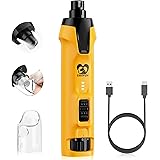About 75% of people with emotional support cats say they feel less stressed and anxious. These cats offer comfort and companionship to those with mental or emotional disabilities. They also help improve sleep, increase social connections, and lower blood pressure.
Emotional support cats are different from therapy cats because they don’t need special training. They are recognized by the Fair Housing Act as assistance animals. This means landlords must make room for them. Many people find emotional support cats to be a great source of comfort and companionship.
We will look into what makes a cat an emotional support animal and the benefits they bring. We’ll also talk about the legal side of having one and how to choose and train the right cat. Join us as we explore the joys of having an emotional support cat and how they can enrich our lives.
Key Takeaways
- Emotional support cats can reduce stress and anxiety in individuals by providing comfort and companionship.
- Interactions with emotional support cats can improve sleep quality and lower blood pressure.
- Cat companionship can motivate activity and enhance empathy in individuals.
- Emotional support cats do not require special training, but obedience training and socialization are recommended.
- The Fair Housing Act recognizes emotional support cats as assistance animals, requiring landlords to provide reasonable accommodation.
- Owning an emotional support cat can have a profound impact on mental health and overall well-being.
Understanding Emotional Support Cats: More Than Just Pets
Emotional support cats are more than just pets. They offer comfort and companionship to those with mental health issues. These cats can lower stress and blood pressure, helping those with mental health problems. They also increase dopamine, which improves emotional well-being.
Emotional support cats differ from therapy cats in training needs. Therapy cats need special training for public settings. But emotional support cats don’t need training because they naturally offer therapy. This shows their unique role in supporting their owners.
What Defines an Emotional Support Cat
An emotional support cat is a cat that offers emotional support and comfort. They help with travel anxiety and provide calm in stressful times. As support animals, they are protected under the Fair Housing Act. This means owners can avoid pet deposits and fees when renting.
The Difference Between ESA Cats and Therapy Cats
ESA cats and therapy cats have different roles and training needs. Therapy cats are trained for specific tasks, like visiting nursing homes. ESA cats, on the other hand, provide emotional support and comfort to their owners. Here are some key differences:
- ESA cats do not require specific training
- Therapy cats require specific training to provide support in public environments
- ESA cats provide emotional support and comfort to their owners
- Therapy cats provide specific services, such as visiting nursing homes or hospitals
Legal Recognition and Status
Emotional support cats are recognized as support animals under the Fair Housing Act. This means housing providers must make accommodations for them. However, since 2020, emotional support animals, including cats, are treated as regular pets by airlines.
Qualifying Medical Conditions for an Emotional Support Cat
Emotional support animal cats offer comfort and companionship to those with various health issues. These include anxiety, depression, and PTSD. To get an emotional support cat, you need a real medical need and a prescription from a doctor. Emotional support animals, like cats, are key in helping people with mental health issues.
Some medical conditions that qualify for an emotional support cat are:
- Anxiety disorders
- Depression
- Post-traumatic stress disorder (PTSD)
- Attention deficit hyperactivity disorder (ADHD)
These conditions can be managed with an emotional support cat. They offer emotional comfort and companionship. Studies show cat therapy can reduce stress and anxiety.
Cats also provide physical comfort and affection. This is great for people with mental health issues who find it hard to connect with others. Emotional support pets, like cats, help ease loneliness and offer a sense of connection.
How to Choose the Right Emotional Support Cat Breed
Choosing the right emotional support cat is key. Look at the breed’s temperament, energy level, and grooming needs. Breeds like the Ragdoll, Maine Coon, and Siamese are great for emotional support. They are affectionate and gentle.
Siamese cats love to be close and affectionate. They’re perfect for those who want physical affection. Maine Coon cats are smart and social, great for people with anxiety.
In the UK, getting an emotional support cat certification is helpful. It lets you take your cat in public. An emotional support cat vest can also help identify your cat. The Human-Animal Bond Research Institute found that 85% of pet owners feel less lonely with their pets.
When picking an emotional support cat breed, consider a few things:
- Lifespan: Breeds like the Balinese and Russian Blue can live up to 16-21 years, providing long-term emotional support.
- Temperament: Breeds like the Ragdoll and Maine Coon are known for their mild-mannered and sociable nature, making them suitable for individuals with anxiety or depression.
- Grooming needs: Some breeds, such as the Maine Coon, require regular grooming to prevent matting and tangling of their fur.
The right emotional support cat breed depends on your needs and preferences. Think about temperament, energy level, and grooming needs. This way, you can find a cat that supports you emotionally and keeps you company.
| Breed | Lifespan | Temperament |
|---|---|---|
| Siamese | 15-20 years | Affectionate and clingy |
| Ragdoll | 15 years | Mild-mannered and easygoing |
| Maine Coon | 12-15 years | Sociable and intelligent |
The Process of Getting an Emotional Support Cat Certification
To get an emotional support cat certification, you need to follow a few steps. First, talk to a licensed healthcare professional about your mental health. They will check if an emotional support cat is right for you.
They will look at your condition and decide if a cat is needed. If yes, they will give you a prescription.
Any cat can be an emotional support cat with the right certification. But, some breeds like Maine Coons, Ragdolls, and Persians are often chosen. They are known for being calm and loving.
To get certified, you need to register your cat with a trusted organization. You also need to show proof of your medical need and how your cat helps you emotionally.
Some people like to share funny cat memes online. This helps spread the word about emotional support animals. Others might want to train their cat to behave well in public. But, emotional support cats don’t need special training. They just need to be well-behaved and not disturb others.
Here are the main steps to get an emotional support cat certification:
- Consult a licensed healthcare professional to discuss your mental health and determine if an emotional support cat is a suitable treatment option.
- Obtain a prescription from the healthcare professional if an emotional support cat is deemed necessary.
- Register the cat with a reputable organization and provide documentation of the individual’s medical need and the cat’s role in providing emotional support.
By following these steps, you can get your emotional support cat certified. This way, you can have a loyal companion by your side.
| Emotional Support Cat Breeds | Recommended For |
|---|---|
| Maine Coons | Their calm and affectionate nature |
| Ragdolls | Their gentle and laid-back personality |
| Persians | Their quiet and playful nature |
Training Your Emotional Support Cat for Success
Many people wonder about training their emotional support cat. Emotional support cats don’t need special training but they do need basic care. They need a safe and loving home, which you can create through training and socialization.
In emotional support cat australia, owners are advised to teach their cats to behave well in public. Use positive methods like treats and praise for good behavior. A strong bond with your cat is key, as it helps them offer emotional support and comfort.
Some basic training needs for emotional support cats include:
- Housebreaking
- Socialization
- Obedience training
Teaching these skills takes patience, consistency, and positive reinforcement. There are also professional training options for extra help.
By putting effort into training your emotional support cat, you can make them a loving and well-behaved friend. They will provide comfort and emotional support for many years.
Housing Rights and Regulations for ESA Cats
Emotional support cats have special rights when it comes to housing. Knowing how to certify and get an ESA cat is key. The Fair Housing Act protects these cats, allowing for housing accommodations and no pet fees.
Landlords must make reasonable accommodations and can ask for proof. If you’re wondering if you can have an ESA cat, the answer is yes. You need a legitimate ESA letter from a licensed mental health professional. This letter must show your mental health diagnosis and why the ESA is needed.
Some important things to remember when getting an ESA cat include:
- Providing an ESA housing letter from a mental health practitioner
- Ensuring the letter includes the signature of a medical professional, the length of the patient’s involvement, and an explanation of why the ESA is necessary
- Understanding that landlords cannot charge extra fees for emotional support animals
- Knowing that landlords can legally reject ESAs if the animal is illegal in the state, the ESA is destructive, or if the animal displays threatening behavior
Tenants and their emotional support animals are protected by the Fair Housing Act. Landlords cannot deny housing because of an ESA. If you’re thinking about how to certify or get an ESA cat, knowing these rules and your rights is crucial.
| Law | Protection |
|---|---|
| Fair Housing Act | Provides protections for individuals with emotional support cats, including the right to housing accommodations and exemptions from pet fees |
| Americans with Disabilities Act | Protects service animals but not emotional support animals |
Traveling with Your Emotional Support Cat
Traveling with an emotional support cat requires understanding the rules and regulations. To apply for emotional support cat certification, you need a letter from a licensed healthcare professional. This letter is key for traveling with your cat, proving your need for an emotional support animal. You can find free emotional support cat registration, but make sure the organization is real.
To get an emotional support cat, start by talking to a licensed healthcare professional. They will check if you need an emotional support animal and give you the needed documents. With these documents, you can travel with your cat. But, remember that airlines have different rules for emotional support animals.
Some airlines, like LATAM Airlines and Aeromexico, let emotional support animals in the cabin. Others don’t. Always call the airline ahead of time to check their policy and show your documents. You might also think about making your emotional support cat a psychiatric service dog. This needs training and a check from a licensed mental health professional.
Here are some important things to think about when traveling with your emotional support cat:
- Get a letter from a licensed healthcare professional
- Check the airline’s policy on emotional support animals
- Have the right documents, like an ESA letter
- Think about making your cat a psychiatric service dog
Knowing the rules and regulations helps make your trip smooth and stress-free with your emotional support cat. Plan ahead, check the airline’s policy, and have all the documents ready to avoid any problems during your trip.
Essential Equipment and Supplies for ESA Cats
Having the right equipment and supplies is key for your emotional support cat. Cats are the most common ESAs, making up about 65% of them. You’ll need to create a safe and comfy space for your cat. This includes a good cat bed, scratching post, and toys to keep them entertained.
For those looking to buy emotional support cats, knowing the legal rights is crucial. ESAs have two main rights: flying in the cabin of an aircraft and living in no-pet housing. To enjoy these rights, you need a letter from a licensed mental health professional. This is a key step in how to register a cat as an emotional support animal for free.
Some top emotional support cat breeds are British Shorthairs, Ragdolls, and Maine Coons. These cats are calm and loving, perfect for those with emotional disabilities. When traveling with your ESA cat, having the right travel gear is vital. For more tips on traveling with your ESA cat, visit catsjoys.com.
To ensure your cat’s comfort and care, consider these essential items:
- Proper identification, such as a vest or tag, to indicate that your cat is an ESA
- Comfort and care items, such as a cat bed and scratching post
- Travel accessories, such as a cat carrier and harness
By providing the right equipment and supplies, you can help your emotional support cat live a happy and healthy life.
Understanding ESA Letters: Requirements and Validity
An emotional support cat can offer comfort and friendship to those with mental health issues, like depression. To get an emotional support cat, you need a diagnosed mental health condition. You also need an ESA letter from a licensed mental health professional.
The ESA letter must have certain details. It should say why you need the cat and how it helps you. It must also show the professional’s qualifications and be written clearly. You can look for an emotional support cat near you or adopt one for depression.
Here are some important things to remember about ESA letters:
- The letter must come from a licensed mental health professional, like a therapist or psychologist.
- The letter should explain your medical need and how the cat supports you emotionally.
- The letter should be clear, follow ESA laws, and have enough details.
ESA letters are usually good for one year. They can be in paper or digital form. Keeping a log or journal of your ESA benefits can help show how your cat helps your mental health.
Recent Changes in ESA Regulations and Laws
People looking to get an emotional support cat need to know about new ESA rules. These updates change how emotional support cats and their owners are protected.
New federal, state, and airline rules are in place. For example, California now lets people with emotional support cats live in places that usually don’t allow pets. This is because of a new law that helps those with disabilities.
It’s important to know what documents are needed for an ESA. These include letters from doctors or people who know about your disability. But things like ID cards or vests don’t prove you need an ESA.
- Housing providers must allow emotional support animals as a reasonable accommodation for individuals with disabilities.
- Documentation requirements for ESAs include credible statements from individuals or third parties familiar with the disability.
- Online certifications, ID cards, tags, or vests worn by an animal do not reliably establish someone’s disability-related need for an ESA.
By keeping up with these changes, you can make sure your emotional support cat is protected. This way, you and your cat can keep enjoying each other’s company.
| State | ESA Regulations |
|---|---|
| California | Requires housing providers to provide reasonable accommodations for individuals with disabilities to have emotional support animals. |
| Federal | Prohibits restrictions on breed, size, or weight of ESAs, including those imposed by insurance companies. |
Cost Considerations for Emotional Support Cat Ownership
Thinking about getting an emotional support cat? It’s important to know the costs. The emotional support cat benefits are many, but there are expenses like food, vet care, and supplies. Knowing these costs helps you decide if an emotional support cat is for you.
Some key costs to think about include:
- Food and treats
- Veterinary care, including regular check-ups and vaccinations
- Supplies, such as litter, toys, and scratching posts
Also, consider the emotional support cat requirements. This includes getting an ESA letter. It can open up more housing options and help you avoid pet rent. Plus, emotional support cat rights are protected under the Fair Housing Act. This law stops landlords from discriminating against people with emotional support animals.
To make sure you can afford an emotional support cat, research the costs. You can learn more about emotional support cat care and expenses.
Common Misconceptions About Emotional Support Cats
Emotional support cats offer comfort and friendship to people with mental health issues. But, many people get things wrong about them. They think emotional support cats are the same as service animals, which is not true.
These cats don’t need special training. Their owners don’t have to register or certify them. The only thing needed is a real ESA letter from a licensed mental health expert.
Some people also think emotional support cat owners have the same rights as service animal owners. But, this is not correct. Emotional support cat owners are only protected under the Fair Housing Act (FHA). This law helps prevent discrimination in rental housing. They don’t have the same rights as service animals in public places.
It’s important to know the laws, regulations, and guidelines about emotional support cats. This way, owners can make sure their rights are respected and they don’t confuse others.
- They do not require special training or certification.
- Their owners are protected under the Fair Housing Act (FHA).
- They do not have the same access rights as service animals in public places.
- A legitimate ESA letter from a licensed mental health professional is the only necessary document.
By understanding the laws, regulations, and guidelines about emotional support cats, owners can protect their rights. They can also make sure they respect the rights of others.
International Recognition and Travel Considerations
Traveling abroad with an emotional support cat needs careful planning. You must look into the rules and requirements of your destination. Emotional support cat travel can be tough, but with the right info, it can be great.
Some airlines, like LATAM, Volaris, and AeroMexico, still allow emotional support animals on certain flights. But most U.S. airlines don’t accept them as service animals anymore. Always check the airline’s emotional support cat airline rules before you book.
When going abroad, it’s key to know the local laws and rules for pets. You’ll need health certificates, microchips, and shots for your cat. Also, look into emotional support cat hotel options at your destination. Some hotels welcome pets.
Here are some important things to think about for international travel with an emotional support cat:
- Research the airline’s emotional support animal policy
- Obtain the necessary health certificates and documentation
- Comply with country-specific regulations and requirements
- Consider pet-friendly hotel options
Conclusion: Making the Most of Your ESA Cat Relationship
Emotional support cats offer deep comfort and well-being to those with mental health issues. Emotional support cats help ease symptoms of depression, anxiety, and PTSD. They provide constant companionship and emotional support.
To get the most from your ESA cat, focus on their needs. Spend quality time together, play, and show affection. Also, make sure they get the care, food, and vet visits they need. This way, you can enjoy the full benefits of having an ESA cat.
The need for emotional support animals is rising. It’s important to keep up with the rules and guidelines for them. Know your rights and responsibilities as an ESA cat owner. Let’s work together to make sure these animals are recognized and accepted. This way, we can help people live healthier, happier lives.
































































